Another attempt to debunk the Golden Ratio is fundamentally wrong.
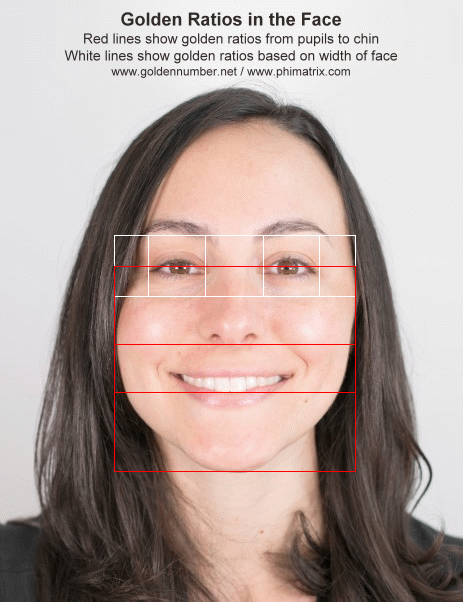
Golden ratio facial analysis of Julia Calderone
In October 2015, Dr. Keith Devlin was interviewed by science writer Julia Calderone in an article titled “The one formula that’s supposed to ‘prove beauty’ is fundamentally wrong.”
Professor Devlin is a accomplished Ph.D. in mathematics at Stanford University and NPR’s Math Guy. His comments have reach and impact, but his views on the golden ratio are not always accurate, complete, consistent, objective or supported by evidence. Earlier in 2015, he was featured by a leading online design magazine in an article titled “The Golden Ratio: Design’s Biggest Myth – The Golden Ratio is Total Nonsense in Design. Here’s Why.” The article drew hundreds of negative responses (which were later censored and deleted by the magazine) because of its inaccuracies and misrepresentations. A highly regarded NYC designer, Darrin Crescenzi, described the article as “dangerous” and “under-informed nonsense,” motivating him to write a six page counterpoint titled “Why the Golden Ratio matters. In defense of using visual harmonies in Design.”
Do Dr. Devlin’s claims about the golden ratio and beauty “prove anything” or are they “fundamentally wrong?” Unfortunately, this latest interview resulted in another article based on a straw man argument with inaccurate information and unsupported claims. Devlin’s assertions about the golden ratio and beauty are inconsistent with statements in his own online lectures (see video below). The evidence that he says doesn’t exist is readily available, and much closer than you might ever imagine.
The evidence is “right in front of your face”
Devlin claims in the article that no evidence exists for the golden ratio in the human body. He needed look no further than to the face of his interviewer to find that evidence, as illustrated by the golden ratios in her facial analysis shown above. More examples are below, along with an explanation of why these facial markers are important.
But the evidence for the golden ratio is still denied
Despite this and a body of other evidence, here are some of the key quotes from the article:
… the allegation that it exists in the human body has little to no scientific validation.
… mathematicians haven’t found evidence that the Golden ratio proves anything, let alone beauty, in the human body.
But on the science side, there’s no evidence.” No evidence, Devlin says, that things conforming to this ratio are more beautiful, or that the ratio exists in the human body at all.
But when you try to apply it to humans, Devlin says, the theory falls flat because there’s simply no evidence that we are optimised in the same way that plants are.” Humans come in all different shapes and sizes after all.
… the belief that the Golden ratio exists outside of the garden is simply that — a belief. “It’s like Creationism. You can believe it if you want, but there’s no evidence,” Devlin says. “If you believe it, you’re not being scientific.
Those are strong statements, but isn’t the core of “being scientific” investigating and providing evidence, rather than saying there’s none to be found?
More evidence for the golden ratio in the human face
Devlin says there’s no evidence “on the science side” to show that the golden ratio appears in the human face and impacts on our perceptions of beauty. Here are a few examples:
- The extensive research on facial attractiveness by recognized beauty expert Dr. Stephen Marquardt. He’s a maxillofacial plastic surgeon and a USC/UCLA university professor. He’s also the inventor of the Marquardt Beauty Mask, which is based on the golden ratio and was awarded a US patent. His research investigated the attractiveness of hundreds of faces. He’s been featured in dozens of articles and documentaries on beauty and is recognized as the leading expert on the topic.
- The research of Dr. Eddy Levin, a pioneer in dental aesthetics and inventor of the golden mean dental gauge and grid system. His system is compulsory study in many US universities.
- A 2008 university by researchers (Dr. Kendra Schmid et al.) at the University of Nebraska titled “Computation of a Face Attractiveness Index Based on Neoclassical Canons, Symmetry, and Golden Ratios.” The study identified six facial proportions for which golden ratios were predictors of attractiveness.
- A 2009 university study on attractiveness by researchers (Dr. Pamela Pallett et al.) at the University of Toronto and University of California, San Diego titled “New ‘Golden’ Ratios for Facial Beauty.” My analysis revealed that the faces selected by study participants as the most attractive had a dozen golden ratios in their key facial markers (see below).
Other evidence is available as well, so how can Devlin make these claims?
Just another straw man argument, battling an invalid proposition
First, note that the article creates a feable straw man argument with its statement that the golden ratio is said to be a formula that “proves” beauty. No one I know with any depth of knowledge on this topic claims that the golden ratio “proves” beauty. As in the design arts, it’s not a single, all-encompassing silver bullet. It’s a tool to understanding, creating and refining natural aesthetics and beauty.
Beauty is influenced by more than one factor
There is no single magic “formula” for beauty, yet we all know it when we see it. Beauty is a concept that is dependent on human perception, not a mathematically-defined proof or law of physics. It’s influenced by many factors – proportion, symmetry, complexion, skin tone, health, facial expression, aging and more.
Proportion and symmetry are critical to beauty
Proportion and symmetry are critical factors in facial attractiveness, and the golden ratio has unique mathematical properties that no other number has to create both recursive proportionality and bilateral symmetry. The evidence shows that it provides a very good foundation in unveiling and understanding the mathematics of beauty. Below are illustrations from Dr. Marquardt’s work illustrating varying levels of conformance to his golden ratio-based beauty mask. Click on any image for high resolution:
- Beautiful face
- Attractive face
- Average face
- Unattractive face
- Very unattractive face
It’s lame to suggest that that specific facial proportions are irrelevant to beauty just because “humans come in all shapes and sizes.” They do to a degree, but they’re not all equally beautiful, and they really don’t come in “all” shapes and sizes. We all have the same basic facial features that make our faces look human, rather than like the faces of ridiculous caricatures, animals or aliens in a science fiction movie. As illustrated above though, even small variations in the most basic of human facial features can create significant differences in perceived attractiveness.
This same fact was demonstrated in the 2009 study at University of Toronto and University of California, San Diego, which analyzed perceptions of attractiveness over a range of different facial proportions:
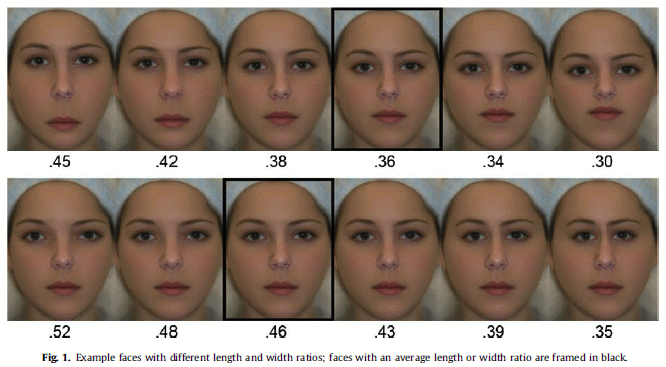
While some of the conclusions of the study were flawed, my subsequent analysis demonstrated that facial images selected as most attractive by study participants had a dozen facial proportions that were very closely aligned with golden ratios:
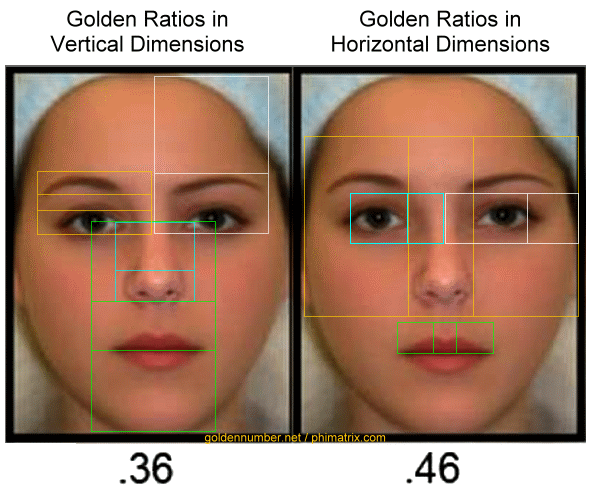
Keep in mind that Devlin is a mathematician, not an expert in beauty or design, and mathematics is based on formulas, equations and proofs. His viewpoint is highly theoretical, as evidenced by his statements that it’s impossible for anything in the real world to fall into the golden ratio because it’s an irrational number. By that pedantic definition, there are also no circles in this world because Pi also has an infinite number of digits. Despite that mathematical truth, our cars drive quite nicely with their non-circular tires. Dimensions based on integers have the same issue. It’s impossible, for example, to create a hole that is exactly 1″ in diameter with infinite precision. In the real world though this is all irrelevant. Most sciences outside of mathematics do not operate with such theoretical perfection and precision. We shouldn’t expect there to be a mathematical “proof” for human perceptions of beauty anymore than there is a “mathematical proof” for every scientific finding in any of the behavioral sciences (e.g., anthropology, sociology or psychology).
One needn’t look far for the evidence of golden ratios
Science is based on the best evidence available, not personal viewpoints. Let’s investigate another photo yet, take some measurements and see what the evidence tells us. We don’t need to use a photo of a super model that we’ve pre-selected to illustrate our point. Let’s just take the face of the article’s author, Julia Calderone. Here’s her portrait photo from her site at http://www.juliacalderone.com:
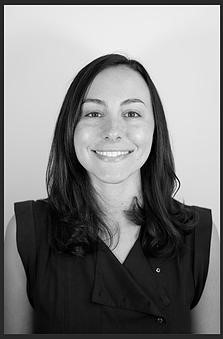
Now let’s use PhiMatrix software, with its pixel-level accuracy, to measure the proportions of her key facial markers to see if the golden ratio is anywhere to be found. To provide increased accuracy, I sought out a high resolution version of her portrait photo to use for the measurements. The dividing line of each rectangle shown in the images below is at the golden ratio of the lines on either side of it. Click on any image below to see the full size images:
- Eye to teeth to chin
- Eye to nose to chin
- Inside of eyes to face width
- Inside eye to outside eye to facewidth
- Hairline to eyebrow to eye
- Smile width to nose width
- Nose width to inner nostril
- Top lip to teeth to bottom lip
- Width of central incisor tooth to lateral incisor tooth
Attractive faces usually have numerous facial markers closely aligned to golden ratio proportions
As with many other attractive faces I’ve analyzed, we find that Julia’s face has a number of key facial markers whose proportions that are very close to the golden ratio. When measured to the pixel on the high resolution photo, they average to 1.634, which is within a barely perceptible variance of less than 0.1% from the golden ratio of 1.618:
- Pupil to teeth to chin – 1.634
- Pupil to nose to chin – 1.618
- Inside of eyes to face width -1.663 (The left side of her face was covered by hair, so its position was estimated by centering the grid on other facial features)
- Inside of eye to outside eye to face width – 1.666
- Smile width to nose width – 1.619 (Dr. Marquardt’s research revealed that smiling produces better golden ratio proportions of the mouth and nose, at the golden ratio from the center of the nose to the outside of the lips)
- Hairline to eyebrow to eye – 1.605
- Top lip to teeth line to bottom lip – 1.615
- Width of central incisor tooth to lateral incisor tooth – 1.663
- Nose width to inner edge of nostril – 1.624
There’s no reason to expect her measurements to be exactly 1.6180339887… ad infinitum in every proportion to illustrate the concept. Julia is an attractive woman, but one would not expect perfect proportions even in a supermodel. Faces are never that perfect, and everyone has some degree of variation from perfect facial symmetry.
The minimum facial markers required to express a human face
Why are these markers and their positions and dimensions important and relevant? It’s because the minimum amount of visual data required to convey the image of a human face is what led to the iconic “smiley face:” two eyes and a mouth.

The proportions of the human face though are somewhat different:
 | 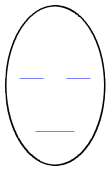 |
Other proportions and positions do not look as human, so there must be a certain set of proportions and positions that represent the most human, and most attractive, appearance. Imagine what a person would look like with these facial marker configurations:
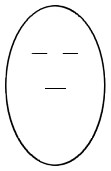 | 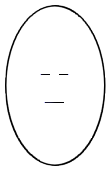 |
Professor Keith Devlin shows the beauty created by the Golden Ratio in design
Devlin is quoted saying that there’s “No evidence that things conforming to this ratio are more beautiful.” In his own video lectures though he describes the unique impact of the golden ratio in the beauty of fractal patterns, as shown below.
He admires one fractal pattern and states, “if you want to end up with this beautiful thing (fractal pattern) … the one (ratio) that makes this beautiful is the golden ratio.” He illustrates with these fractal patterns:
- Beautiful fractal leaves with golden ratio of 1.618
- Beautiful fractal squares with golden ratio of 1.618
- Undergrown fractal leaves with silver ratio of 1.325
- Undergrown fractal squares with growth ratio of 1.5
So how does Devlin “prove beauty” in fractals? Is it perhaps one of these?
Beauty² – Beauty = 1
![]()
No. There is no “proof for beauty,” even in the world of fractals and mathematics. There’s no law of physics or mathematical formula tucked away in a textbook somewhere which proves a fractal based on the golden ratio to be the most “beautiful.” Devlin doesn’t offer any “scientific evidence” that a pattern based on 1.325 or 1.5 with more white space is less “beautiful.” Can he quantify the “amount” of beauty? No, not unless there’s a constant or standard by which to measure it. He knows “beauty” when he sees it, and in his own example it’s produced by the golden ratio of 1.618. It results because the parts of the pattern come together in with a harmony, balance and perfection of proportion that he perceives as the most mathematically and aesthetically pleasing.
Why does he expect a different standard for the beauty of a face?
He continues with these statements:
Certainly if you have a regular growth pattern, the golden ratio is in there.
When you have biological growth the golden ratio does pop up.
It would be unwise to discount (the golden ratio in) anything related to biological growth. It’s in there.
Isn’t the development of a human face and body the result of a biological growth function?
The same ratio that gives beauty to a fractal gives beauty to a face
The only difference in Devlin’s illustration between the beautiful fractal and the unattractive one is the ratio that led to the proportion of each new iteration of its growth. In the fractal squares example, the beautiful fractal is based on a golden ratio of 1.618 while the unattractive one is based on a ratio of 1.5.
These same two ratios are found in Dr. Marquardt’s studies of actual human faces that illustrate the ranges of attractiveness. A face with proportions based on the ratio of 1.5 is clearly far less attractive than ones based on a ratio of 1.618. Click on any image for full resolution, and to see the correlation with the same ratios in Devlin’s fractal patterns.
- Attractive horizontal facial proportions matching 1.618 ratio fractal
- Attractive vertical facial proportions matching 1.618 ratio fractal
- Unattractive horizontal facial proportions matching 1.5 ratio fractal
- Unattractive vertical facial proportions approximately matching 1.5 ratio fractal
If we recognize the impact that the golden ratio can have on the beauty of a fractal, it shouldn’t be difficult to extrapolate that insight to understand that it can impact the beauty of a face as well. Both plants and faces develop according to genetically encoded patterns to optimize some aspect of their nature. Faces just have more complicated patterns than the simple spiral patterns of plants. Plants are optimized for spacing of seeds and access to sunlight. Faces are optimized to attract desirable, healthy mates for reproduction and other more complex biological and human functions.
Science is often based on using the best available theory until another better one comes along. Is there is a better ratio than the golden ratio to explain the proportions observed in Julia’s face, and to understand human facial beauty in general? I invite you to use PhiMatrix for free with its custom ratios to test your theory and present it. I’ll give credit, recognition and a free full license to anyone who finds a system of ratios that better explains the positions and dimensions found in an attractive face.
The Golden ratio in art, design and composition
Devlin also denies that there is any relevance or real application of the golden ratio in the design arts. Let’s give that a test as well. We learn from Julia’s site that she’s also a photographer. A good photographer would know something about composition and use this knowledge in creating the portrait photo for her site. Let’s use PhiMatrix again to find the golden ratios of her photo’s height and width:
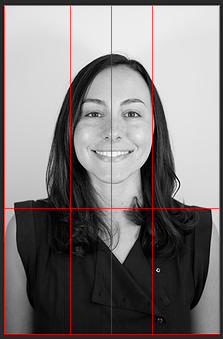
Interestingly enough, we find that her face looks to be in rough golden ratio proportion of the width of the photo (i.e., 0.618 to 1.618). If we simply shift the grid slightly to the right to center it on her face, we find that Julia (or her photographer) cropped her portrait so that her face is in golden ratio proportion to the width of the photo, and so that her shoulder is at roughly the golden ratio of the height of the photo:
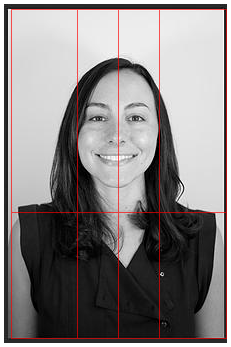
And if that weren’t enough, we find that Julia chose a dress for her portrait with a neckline that is in golden ratio proportion to the height of her head. The length of her hair is also roughly a golden ratio proportion to her hairline to her chin. It’s a good, classic, well-proportioned look. Leonardo da Vinci chose the same proportion for the Mona Lisa.
- Julia Calderone
- The Mona Lisa
Why do humans apply the golden ratio in art and design?
Why would we find these golden ratios here? One possible and likely answer is that Julia has been unconsciously seeing golden ratio proportions in her own facial reflection and in other faces for years. This proportion probably looks natural and aesthetically pleasing to her, and perhaps just seemed “right” when she selected and cropped her own photo for her site. I’ve often seen artists create the golden ratio with surprising precision without even consciously knowing they were using it. I show them the measurements within their own works and they say that it just “looked right” to them. If humans see golden ratios in the beauty of nature and the human face, wouldn’t it be very natural to use those same proportions to create a sense of natural aesthetics and beauty in art and design?
Devlin’s statements reveal other fallacies
If it’s this simple to show the fallacies in Devlin’s statements, what about the rest of what he says?
Devlin says:
Finding the Golden ratio [in the human body] tells you nothing. In order to have something meaningful, you need a scientific explanation (for why it’s there).
We don’t have scientific reasons for why the universe exists or why specific values exist in all kinds of constants in physics and chemistry, from properties of water to the speed of light. That doesn’t mean that measuring and understanding their characteristics is any less meaningful or valuable scientifically.
Devlin claims that interest in the golden ratio is the result of a craze launched by a single book by German psychologist Adolf Zeising in 1855. This ignores historical fact and its impact throughout history on Euclid, Luca Pacioli, Leonardo da Vinci, Botticelli, Raphael, Michelangelo, Johannes Kepler and others before that time. The golden ratios of the Taj Mahal are a beautiful and elegant example of its use in architecture as early as 1632.
- The Last Supper by Leonardo da Vinci
- Last Supper detail showing golden ratios
- Markings on the shield are golden ratios of its width
- Small shield is a golden ratio of the width of its enclosure
- The Creation of Adam by Michelangelo
- The Taj Mahal’s golden ratios from its width
- Taj Mahal golden ratio of windows to frame of arch
- Seurat painting with golden ratios at horizon, pier and sail
- UN Secretariat Building golden ratios
- UN Secretariat window configuration reveal golden proportions
Despite the above evidence, Devlin states:
Unfortunately all of this fun stuff about the art gallery and music and things is just spurious, it’s a fairy tale. You can believe in fairies, you can believe in Santa Claus, and millions of people do, but it doesn’t make them true.
This comment reveals either a lack of knowledge on the topic or a very biased and limited viewpoint. Countless artists, designers and photographers have used the golden ratio as a tool for composition, so why in the world would this be a fairly tale? It’s comments like this that led designer Darrin Crescenzi to describe Devlin’s claims as “dangerous” and “under-informed nonsense,” and hundreds of other readers to post rebuttals to Devlin’s statements in the article on design at Fastco Design. Science is advanced by investigating evidence, not by mocking things you haven’t fully investigated or don’t really understand well enough to present the evidence required to support your statements. Just as with the face and beauty, there’s plenty of evidence of the golden ratio’s application in the arts that Devlin says does not exist.
Devlin is obviously an intelligent individual, so his views may be the result of one or more of the following factors:
- His information is out of date, as evidenced by illustrations in his recent presentations that he downloaded from this site sometime before 2004. The quality and depth of available information has changed significantly since then.
- His view as a mathematician that nothing in the real world can be the golden ratio because of its infinite number of digits. Infinite precision is not possible or relevant in any real world application of the sciences, engineering or the arts.
- His view as a logician that everything is false until it can be proven to be true (with logic, math or science). Many human experiences can never be “proven true,” so this approach has little relevance to aesthetics and the arts. We experience and know beauty, art, creativity, love, etc., and have general consensus on what it is, without scientific proof that it is real and true.
- His view that life is the result of a freak accident without purpose or design. This is a personal belief system, unprovable by science. It filters the way the world is seen, especially as it relates to design in nature.
If you have current information and aren’t limited by those views, the golden ratio can be found in many very interesting places and is a very useful tool for understanding beauty and design.
Even Devlin admits,
I see the world differently from anybody who’s not a mathematician. In fact I see the world differently from many mathematicians. So, in some sense, I’ve seen things that other people are not seeing.
It follows then that he’s not seeing what is seen by people with other talents, experiences, education and viewpoints. This should be clear from the evidence presented above. Devlin’s books and lectures have some very good, insightful information on mathematics, but the viewpoint of even a leading mathematician on beauty, art and design is only going to be about as valuable as the viewpoint of a leading plastic surgeon, artist or designer on mathematics.
Devlin concludes saying,
It’s not that we haven’t disproved that the Golden ratio explains the human body, it’s that we haven’t proved it. I’m not saying any of these things are false, I’m saying that as a scientist, the way they argue it is bulls#!t. There’s just no substantiation for it.
So in the end, Devlin contradicts his emphatic claims. What he said is false about the golden ratio in the human body may not be false at all. It’s just his opinion that it hasn’t been proved scientifically. He positions himself as representing science, but has he proved his own claims “scientifically?” Wouldn’t a scientist examine available data and offer specific analysis on what makes the evidence valid or invalid rather than just making unsubstantiated claims? In Devlin’s own words about proofs:
The key property of a proof is not that it is logically correct, rather that it is expressed in a manner that enables a suitably qualified reader to fill in any holes they notice, to check any steps they have any doubt about, and to correct any errors they find (as they surely will if they dig deep enough).
That standard is not met by saying there’s no evidence when there is, and offering little in exchange but unsupported opinions.
Other perspectives on beauty, mathematics, art and science
Others throughout history have held different views on this topic.
Education is the kindling of a flame, not the filling of a vessel. – Socrates (470/469 – 399 BC)
The good, of course, is always beautiful, and the beautiful never lacks proportion. – Plato (c. 424 – 348 BC)
Without mathematics there is no art. – Luca Pacioli (1447–1517)
Measure what is measurable, and make measurable what is not so. – Galileo Galilei (1564 – 1642)
Geometry has two great treasures: one is the Theorem of Pythagoras; the other, the division of a line into extreme and mean ratio. The first we may compare to a measure of gold; the second we may name a precious jewel. – Johannes Kepler (1571 – 1630)
The most beautiful thing we can experience is the mysterious. It is the source of all true art and science. – Albert Einstein (1879-1955)
Everyone is entitled to an opinion, but facts are based on verifiable evidence, and real understanding only comes with a depth of personal study and experience in a subject. I encourage anyone reading this article to explore this topic at a deeper level, investigate the evidence with an open mind and come to your own conclusions.
You may find that those who view the world as Professor Devlin does are just a few simple measurements and a few insignificant digits away from seeing that beauty of the golden ratio extends beyond the theoretical world of fractals and mathematics to the real world of human beauty, art and design.
To Dr. Devlin: If you’re reading this and can demonstrate that any of it is inaccurate then let me know and I will change it accordingly. I understand you hold a different viewpoint, to which you are entitled, but let’s please find a way to present this topic in a way that is factual and objective. The millions of people who simply want to learn about the golden ratio deserve much more than conflicting, inaccurate information accompanied by sensational, unsupported, polarizing claims. Please understand the evidence that others present before you criticize it and dismiss it. Please share the evidence that does exist with others objectively rather than telling them none exists at all. Please give them the opportunity to do their own analysis, to come to their own conclusions and to learn something in the process.
Note: No photos in this article or on this site have been altered to match golden ratio proportions. PhiMatrix software provides golden ratios and any custom ratio accurate to the pixel, and is available for free testing by anyone on any photo. Any facial analysis should be done with the subject facing directly into the camera, and with the photo taken from at least 10 feet away to elimination optical distortion.
Other references:
http:// www.businessinsider.com.au/the-golden-ratio-fibonacci-numbers-mathematics-zeising-beauty-2015-9
http:// www.techinsider.io/the-golden-ratio-fibonacci-numbers-mathematics-zeising-beauty-2015-9
Google shortcode for this article: http://goo.gl/397U3k

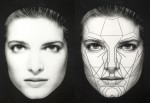
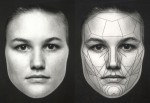
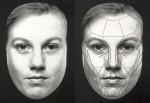
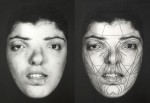
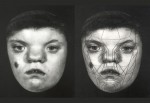
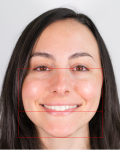
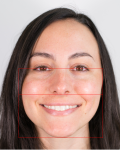
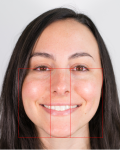
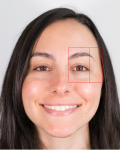
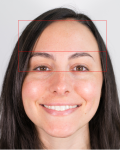
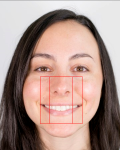



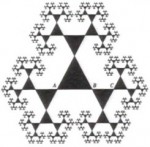
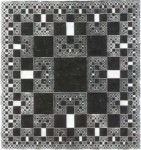
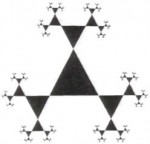
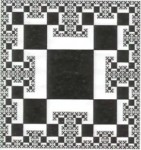
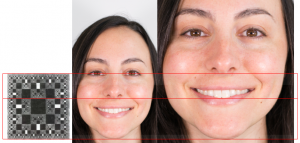
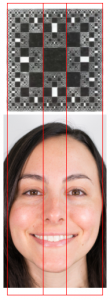
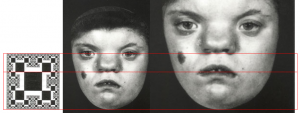
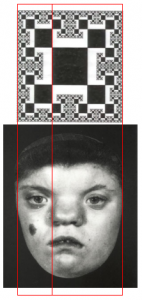
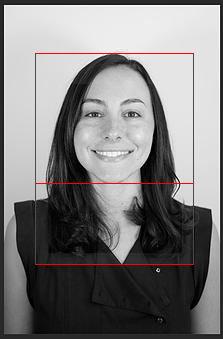
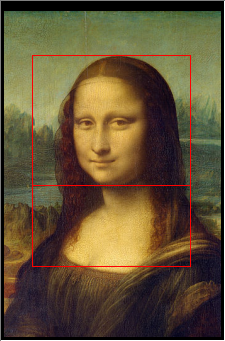
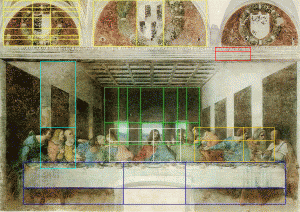
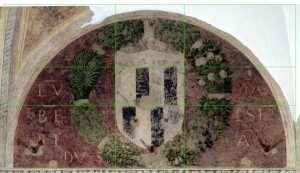
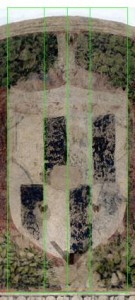
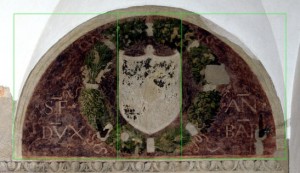
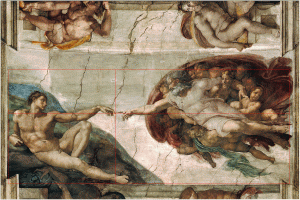
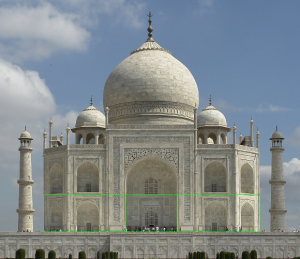
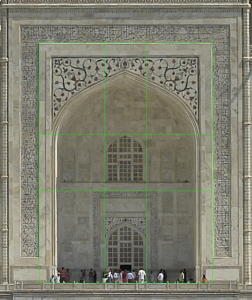
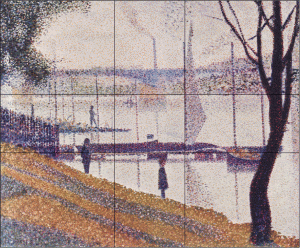
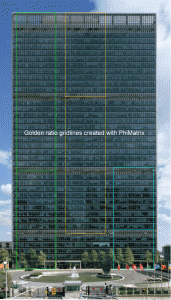



“a smile increases our face value” 🙂
He leído su artículo, el escrito por Julia Calderone y visto los vídeos del profesor Devlin. Considero que en realidad el número de oro está presente en nuestro mundo físico, sin embargo, me parece que es importante saber el por qué esto ocurra y cuál es su explicación científica. No puede ser simples coincidencias que aparezca en diferentes ámbitos.
Translation: I read his article, written by Julia Calderone and seen videos of Professor Devlin. I believe that in reality the number of gold is present in our physical world, however, I think it’s important to know why this happens and what is its scientific explanation. It can not be mere coincidence that appear in different areas.
Golden Number is exist in nature. You can measure the golden ratio by mathematical arrangement of everything in nature from plants to mountains and even the flow of water is also according to that golden ratio if this ratio disturb then flow will also disturb sequential arrangement of the nature.
Any arguments that are in alignment with the Golden Ratio, or even ones that are based upon biological standards of attraction are going to be denied by those who are desperately trying to keep philosophy at the forefront of the argument while forgetting that even David Hume stated that common sense tells us that some objects are more beautiful than others.
Would it be fair to say that “Beauty is in the Phi of the beholder?”
Very good. I’ve already said that same thing here:
https://www.goldennumber.net/beauty/
https://www.goldennumber.net/golden-ratio/
https://www.goldennumber.net/golden-ratio-myth/
It has a nice poetic ring and rhymes with the original phrase, but yet it’s not true.
Well, the people in the pictures “unattractive” and “very unattractive” seem more like people born with some bad health condition. The unattractive one looks like a Waardenburg patient, and the very unattractive one looks like a patient of another health condition. I am not calling them beautiful either, because severe unhealth shouldn’t be considered attractive, but they rather look ill, but yeah, illnesses do make people ugly at times sadly.
Also, what about people’s opinions? Because I am sure that not everybody is into Hollywood hotties, and people are born differently. And I mean that not everybody looks like Angelina Jolie nor Natalie Portman. Lily Cole is quite pretty in my opinion even if she doesn’t look like woman in the “attractive” picture.
The point is not that Lily Cole, or anyone else, needs to look like the woman in the “attractive” picture to be attractive. The point is that attractiveness is related to certain key facial proportions being close to the golden ratio. Look at how Lily’s facial features conform closely to golden ratios in a number of measures here:
This particular image was chosen because it was taken looking directly into the camera and revealed the sides of her face. The principles shown by the golden ratio lines in the various colors are discussed in more depth at https://www.goldennumber.net/meisner-beauty-guide-golden-ratio-facial-analysis/.
This particular image was chosen because it conforms to arbitrary choices for corners of rectangles. If the model were to close her mouth, then the rectangle between her pupils and her ching would no longer be a golden rectangle.
No, this particular image was chosen because the reader specifically referenced Lily Cole and of all the ones I found this image most closely meets the requirements for accurate facial analysis. Her mouth is not open so much that closing the lips would significantly change the proportions. The golden ratio would simply be close to her lip line. Also, the point is not that every person’s facial features conform exactly to these golden ratios, but that on average do, and that golden ratios are commonly found in the face, as illustrated by those for her eyes as well.
So I just discovered the app called anaface. I put through some of the beautiful faces in Hollywood and they only scored in the 7 ranges. While symmetry is crucial to attractiveness, which the actors I used had, is it possible that being in the so called golden ratio zone doesn’t mean a most beautiful face?
Head shots I used that only got 7s were Angelina Jolie and Rose McGowan, Depp and Pitt of course. A few others… However Katy Perry did get 9 but I dint think she’s as gorgeous.
Several possible issues. First, Anaface doesn’t disclose their algorithm, so we don’t know if it uses proper golden ratio measures in computing its score, nor do we know the weightings of the factors it uses in creating a composite score. See https://www.goldennumber.net/meisner-beauty-guide-golden-ratio-facial-analysis/ for common measures that can be used. Second, it’s critical that the photos used in the analysis be suitable. See https://www.goldennumber.net/facial-beauty-golden-ratio-photo-analysis/ for details.
Hello,
While I believe this article raises several valid points, I would like to point out that the comparison between the two faces, one based in the golden ratio and one based on 1.5 is invalid because the right hand face has deliberately been made to look unsymmetrical, as seen with the large mole on the left hand side and the variation in eyebrows. So if you are going to do a comparison, please isolate the valid elements
If the “right hand face has been deliberately been made to look unsymmetrical,” as per your assumption, it was not by me. I admittedly seek images to illustrate a particular point, but I never alter images to “make the data fit the hypothesis” unless that is made explicitly clear in the articles narrative. The particular image to which you refer was provided with permission and reference exactly as it appears on the site of recognized beauty researcher and expert, Dr. Stephen R. Marquardt. It appears on his page “Beauty Ranges.” That page illustrates the impact of deviations in actual faces from his golden ratio-based “Marquardt Beauty Mask,” and the resulting impact on perceptions of attractiveness.
My Plastic Surgeon i teach with from Montreal Dr Arthur Swift and I both think that many articles and discussions around using the Golden ratio for facial restoration and assessment of facial beauty — are thinking of the golden ratio as Marquardt’s mask. –but the mask was based on the golden decagon matrix. Our Golden ratio of facial proportions takes into account the Intercanthal distance [ICD] [which he did not] and the basis of all our measurements are off this consistent measurement in adult life. When we use the ICD as the starting point — even the beautiful Asian faces are Golden
Kent Remington Calgary Canada
I believe the golden ratio is important in art and design. Also, I think in terms of artistic merit in works of art vs illogical, boring elements that decrease artistic merit.
Great works of art have artistic merit for reasons of color, contrast, placement, messaging, music, flow, purpose, excitement, anticipation, balance, effective randomness, or effective simplicity – as in the art of Mondrian. All art with artistic merit needs many of these beautiful elements. When the lights are on in a room you see everything. When they are off you see nothing. Artistic merit turns the lights on.
There are some interesting design principles that work within the ratio. That can create beautiful randomness, if randomness is what you want. We see it in nature. A merging of structure and randomness is a skill and instinctual. It can also be a phenomena as seen in kaleidoscopes.. I talk about kaleidoscopes and excitement below. But as for decorating the golden ratio, Van Gogh is one of my muses to study movement, contrast and color in an organic way overlaying the ratios.
One design principle I learned was to avoid touching edges to edges unless it is intentional. Perfect if you want a mirrored effect. Or some other ingenious expression. Otherwise, edges touching edges can look cramped and illogical. It can kill a photograph or work of art. Just be careful to space objects well. Boring repetition can also kill art. The music and rhythm of a painting will be lost. Or a photograph or pattern. That is, unless repetition is intentional.
An example is a sea scape with boulders on a rocky, sandy beach. You wouldn’t space or size the boulders regularly like you would columns of a Greek temple – unless it is intentional. You would give them a “tossed” organic look. Avoid repeating the same distances and sizes if you want to take your viewer into movement and rhythm and charm. Comfort. Excitement. You can even use the ratio to space and size your boulders if you know how.
This is such an important principle in some kinds of art. Intentionally organic art is one kind. Variation is organic. It will give the eye somewhere to roam. And that is exciting. The human brain can register boring repetition where it should not be. Exactly spaced boulders three feet apart on a sandy shore would be disturbing. Why? We know they ought to be different sizes and distances apart. We are expecting organic beauty in organic spaces. The ratio still holds, even in organic spaces. How to decorate within ratios can be a challenge. Is it safe to apply elements here and there at random? Of course. Just be sensitive to their effect.
I don’t have space to talk about leading the eye on an interesting journey that gracefully takes it off the edge of the canvas. But that is also a principle when painting some landscapes. Take the eye out of a canvas that works has a pleasing journey, and it will repeat the journey. It invites revisiting the scene.
Another principle is to make one corner different than the other three. This is not for all art or photography. But it can be good in some. If three corners of a canvas have shadowy, dark areas, make one corner lighter and airier to depict cast light. It doesn’t even have to be shadows. Eliminating a repeated idea in one corner can free up the eye. Corners are very important in some artwork. Again, avoid boring repetition that the brain shuts down on seeing. You can also fake light by painting darkness behind a vase of flowers. Helen VanWyck was a genius at such things. She was a fabulous floral artist worth googling.
Another element I use in some of my art is the starburst effect. Placing or hinting at this can add beauty. Even if it is vaguely representational. Trees have a starburst pattern when viewed from a distance. Even pine trees have a starburst pattern in the pinecones. I like to incorporate starburst patterns if it fits a work of art. Never if it doesn’t, or if it overwhelms.. A lens flare added to photography just to have a lens flare would look bad. The sun portrayed as a vector graphic can have a starburst pattern of sunrays. It is more interesting than just a circle.
Why do glass kaleidoscopes have patterns that are ever beautiful? They are a starburst with regularly spaced sections centered at the horizon. That excitement, plus the randomness of the shapes and colors creates anticipation. You want anticipation in your artwork, architecture or photography. I use the PhiMatrix product mentioned in this article. It gives me a lot of help in Photoshop with spacing ratios. I am mostly self taught after art classes in college. College gives you the foundation to keep learning. Part of the things I talk about here I figured out on my own.
PS. Look up Helen Van Wyk quotes about art. “You can’t get it right until you get it wrong” is one. “It is in the contrast of light and dark that design happens” is another. Probably her most famous quotes. She had lovely proportions in her art and some was delightfully random. Her work had great artistic merit. And she has books of instruction.
https://www.academia.edu/106906435/Миф_о_золотом_сечении_